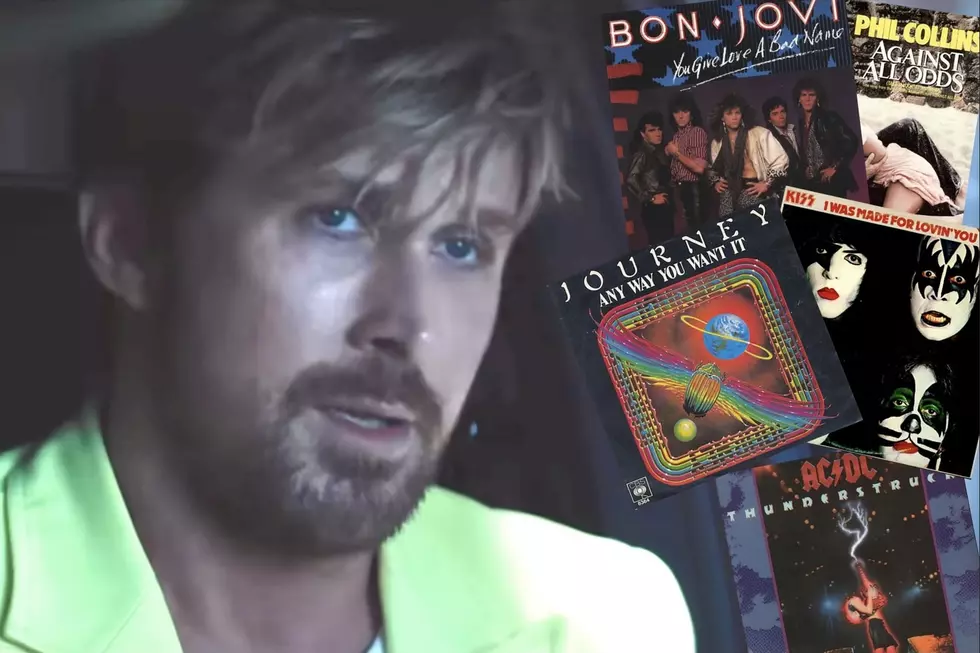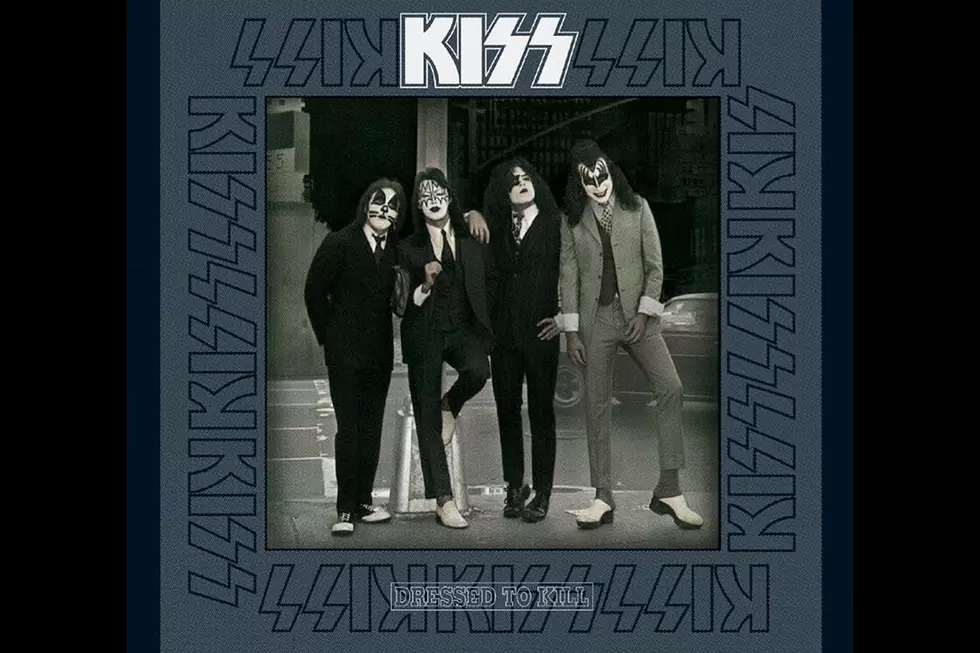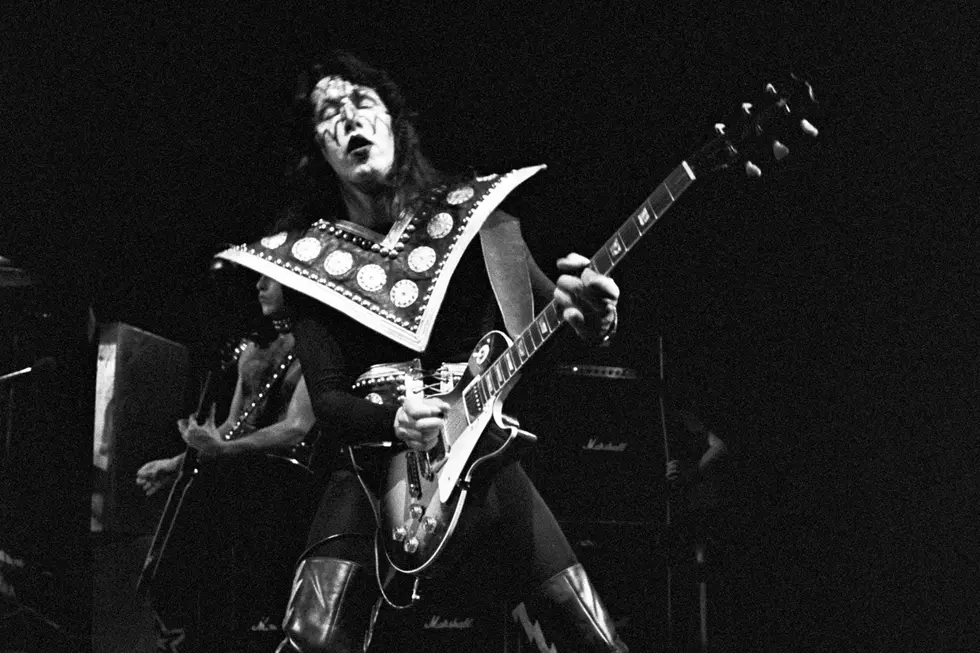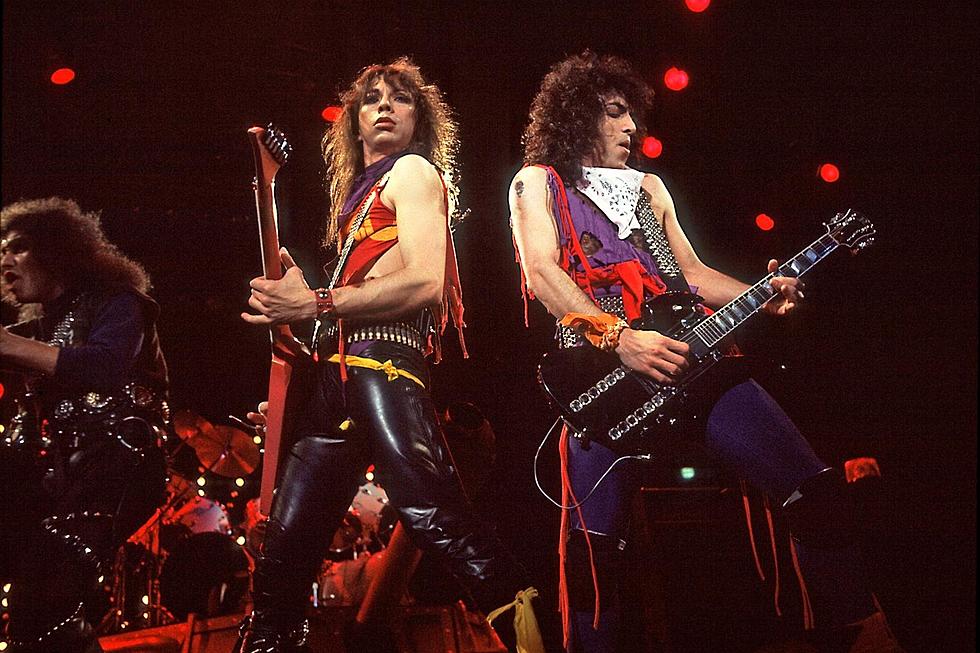
When Kiss Rushed Out ‘Dressed to Kill’ Amid Career Uncertainty
The Wall Street finery sported by Kiss, as they unveiled their third studio album Dressed to Kill on March 19, 1975, was in no way representative of the very modest state of their personal finances.
Indeed, although the still-young band had already started making a decent coin out on the road, every cent of it was being immediately reinvested into their increasingly ambitious stage presentation, or other promotional expenses. So, there’s no exaggeration in saying that money was even tighter than Gene Simmons’ suit – which he incidentally borrowed from Kiss manager Bill Aucoin, because drummer Peter Criss was the only member of the band who actually owned one.
All of which helps explain why Dressed to Kill was frantically rushed into record stores that day, not even six months after the release of Kiss’ sophomore album Hotter than Hell, and just over a year beyond their February 1974 eponymous debut. At this juncture, the future of Kiss’ career was still quite uncertain and, even worse, their label Casablanca Records was on life support.
After quarreling with distributor Warner Bros. and failing to break any other artists, Casablanca president Neil Bogart was desperate for a hit that might turn his company’s fortunes around. So desperate that he begged Kiss back into the studio somewhat sooner than they were ready (tour support funds having effectively dried up) and then insisted on producing Dressed to Kill himself — not because he had any studio experience, but because he couldn’t even afford to hire a producer.
Yet, despite all of these challenges and the mounting pressure to perform, the members of Kiss still turned out a respectable (if uneven and exceedingly short, at barely half-an-hour) collection of new tunes, highlighted by Paul Stanley’s infectious “C’Mon and Love Me,” Simmons’ resurrected Wicked Lester number, “She,” Ace Frehley and Stanley’s punchy “Rock Bottom” (complete with acoustic intro), and Simmons and Stanley’s made-to-order anthem “Rock and Roll All Nite.”
Not as stellar, but hardly chopped liver either, were deeper album cuts like Simmons’ cheeky “Ladies in Waiting” and plodding but strangely seductive “Two-Timer,” Frehley and Criss’ urgent collaboration on “Getaway,” and Stanley’s like-minded “Love Her All I Can.” As for the eye-rolling “Room Service” and and the throwaway “Anything for My Baby,” let’s not go there.
Alas, not even Dressed to Kill’s strongest songs and designated singles – “Rock and Roll All Nite” (chart peak No. 68) and “C’Mon and Love Me” (which did not chart) – ultimately gave Casablanca the hit they so desperately needed. For that, the label would have to wait until the follow-up Alive, one of history’s most famous double-live albums.
Kiss Lineup Changes: A Complete Guide
Kiss Released One of Rock’s Most Hated Albums
More From Ultimate Classic Rock









